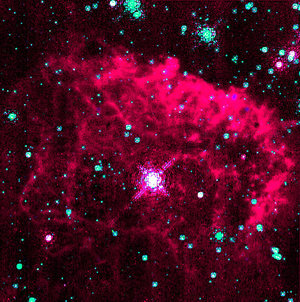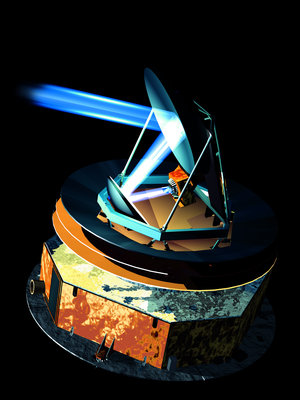Vital stats
Planck offered vastly improved performance in measuring the Cosmic Microwave Background (CMB) radiation compared to balloon-borne and ground-based experiments and exceeded the performance of any previous space-based instruments of this kind.
The spacecraft revolved about its Sun-pointing axis once per minute to stabilise its attitude. Planck used this stabilisation spin to scan the sky, observing at least 95% of it through two separate observation periods in a span of 15 months.
| The Planck spacecraft | |
|---|---|
| Dimensions | 4.20 x 4.22 m (height x width) |
| Mass | 1.95 tonnes at launch |
| Spacecraft | Spin stabilised, 1 rpm |
| Telescope mirror | 1.9 x 1.5 m primary reflector |
| Telescope mass | 205 kg with focal plane unit |
| Lifetime | A minimum of 15 months, limited by degradation of cooling system |
| Operational orbit | Lissajous orbit at an average distance of 400 000 km from L2 |
| Propulsion | Hydrazine, 12 thrusters x 20 N each, 4 thrusters x 1 Newton each |
| Solar arrays | Flat, fixed triple-junction Gallium-Arsenide cell panels on rear of spacecraft |
| Solar array area: 13m2 | |
| Batteries | 39 Ah lithium ion batteries |
| Communication |
3 x low gain antennae 1 x medium gain antenna |















 Germany
Germany
 Austria
Austria
 Belgium
Belgium
 Denmark
Denmark
 Spain
Spain
 Estonia
Estonia
 Finland
Finland
 France
France
 Greece
Greece
 Hungary
Hungary
 Ireland
Ireland
 Italy
Italy
 Luxembourg
Luxembourg
 Norway
Norway
 The Netherlands
The Netherlands
 Poland
Poland
 Portugal
Portugal
 Czechia
Czechia
 Romania
Romania
 United Kingdom
United Kingdom
 Slovenia
Slovenia
 Sweden
Sweden
 Switzerland
Switzerland
































